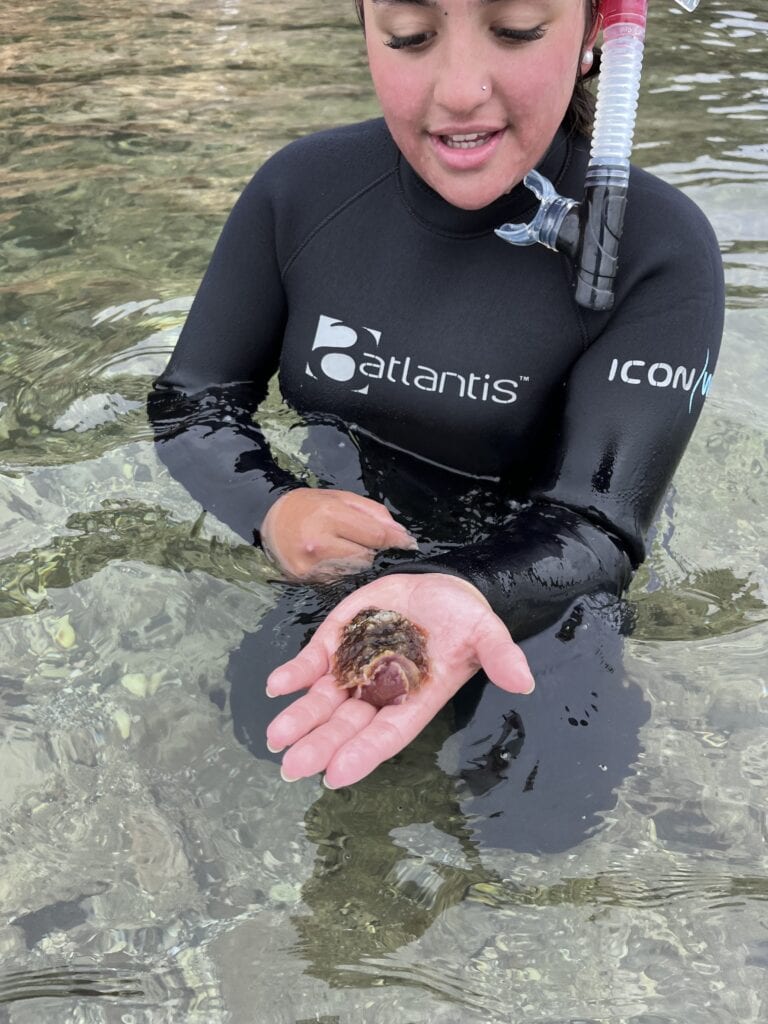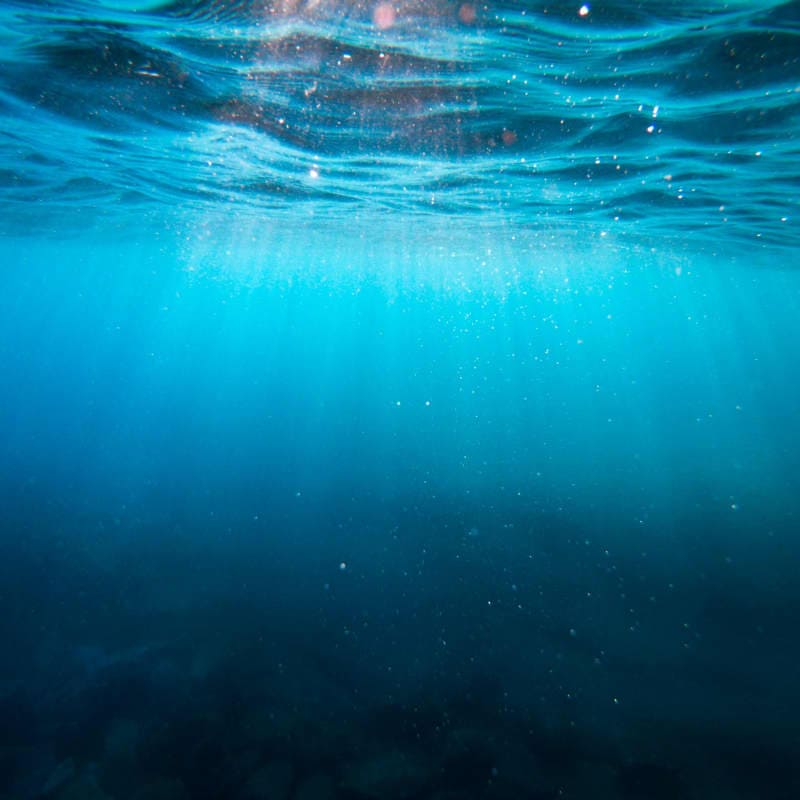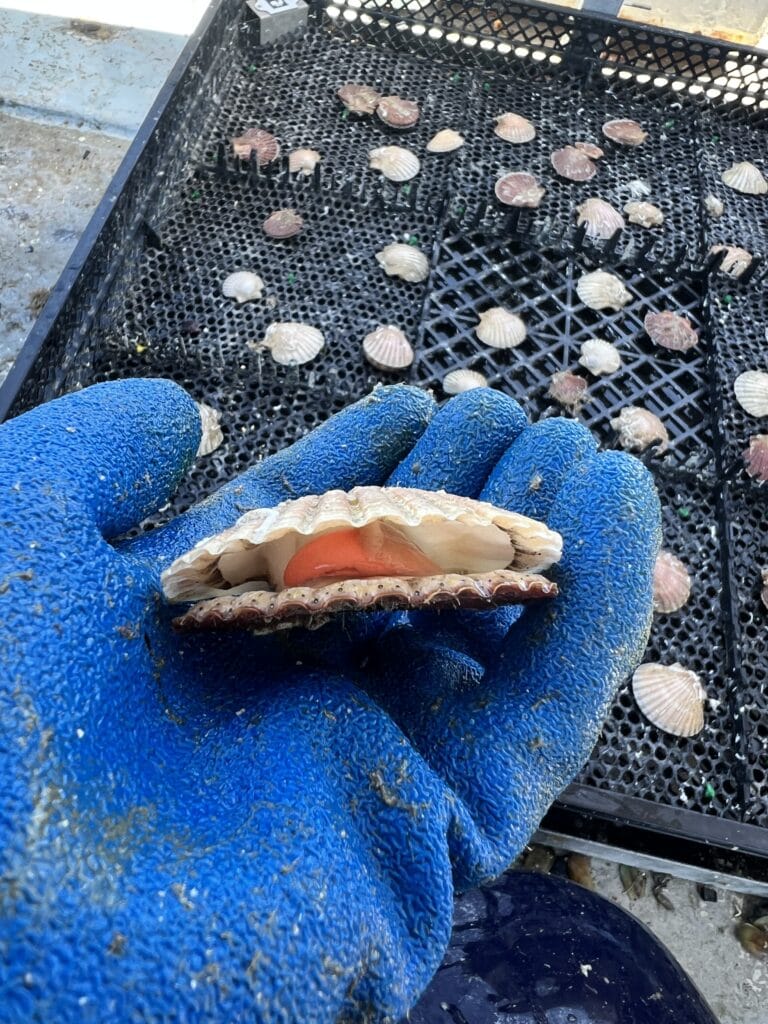The foundations of new aquaculture farming businesses were laid this week in Te Tai-o-Aorere Tasman Bay. Led by Cawthron Institute’s Open Ocean Aquaculture team, as part of the five-year MBIE-funded Ngā Pūnga o te Moana (Anchors of the Ocean) research programme, an experimental trial of new prototype farming structures for oysters, scallops and seaweed were installed at Programme partner MacLab’s Te Tai-o-Aorere/Tasman Bay marine farm.
If successful, these structures could support the switch to multi-species aquaculture operations throughout Aotearoa New Zealand. In a 12-hour operation that involved a range of partners and supporting businesses, scallops, oysters and seaweed were deployed in and on new experimental underwater farming structures inside mussel farming space provided by MacLab.
MacLab typically farms Greenshell mussels on this Tasman Bay site, which are processed into health products at its Tahunanui processing facility. MacLab Aquaculture Manager Mark Burnaby said they are pleased to be able to support Cawthron with this research and development work, as there are ‘great opportunities here that can benefit our region and wider by developing systems that will produce seafood that is sustainable and nutritious with a low carbon footprint.’
The relatively calm waters of Tasman Bay are an ideal location to test whether the new farming structures and the methods are viable for the three species before deployment in the high energy offshore environment of Te Moana a Toi, Bay of Plenty.
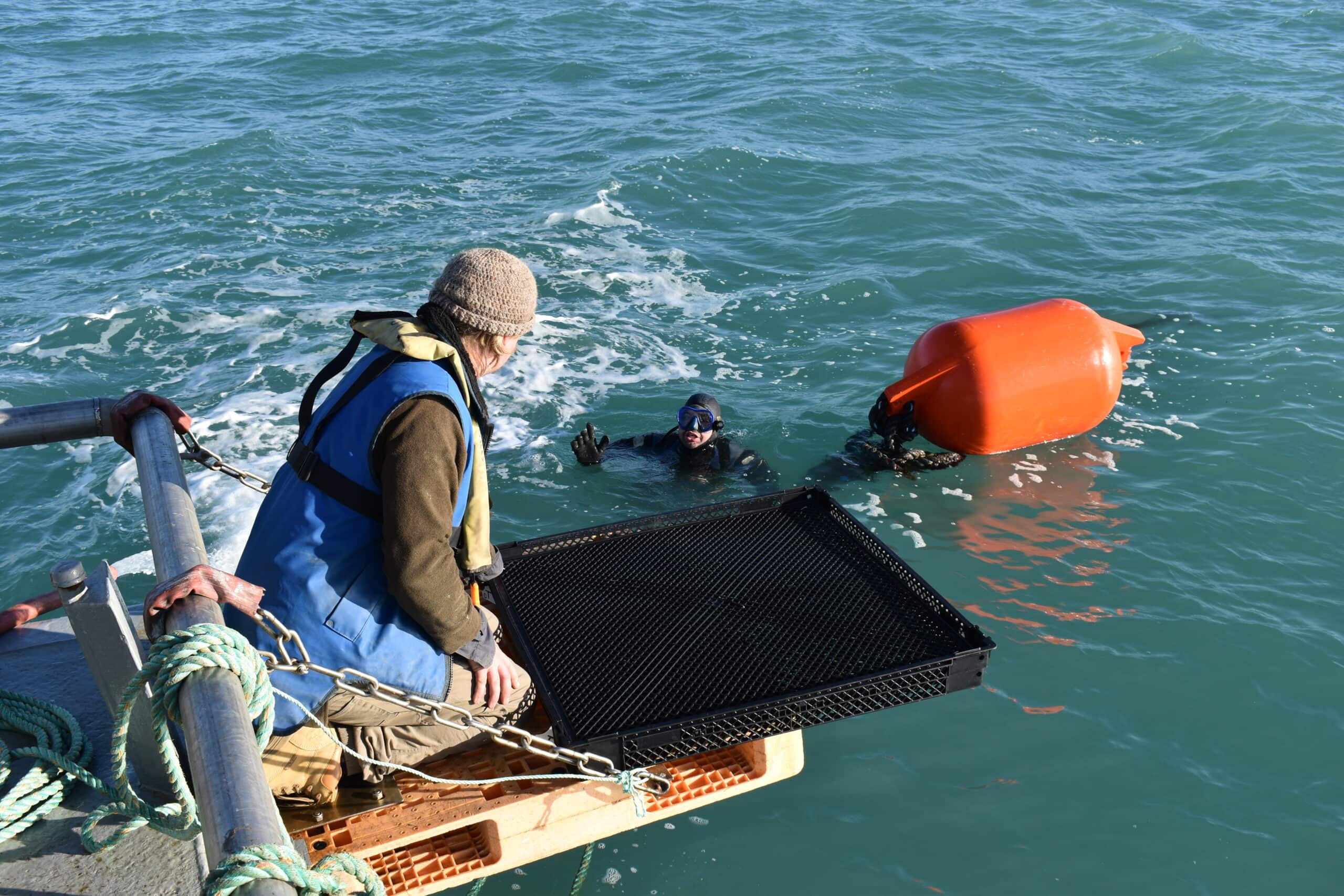
Figure 1: Cawthron’s Nicholas Scott on board the barge preparing trays to be inserted in the shellfish tower.
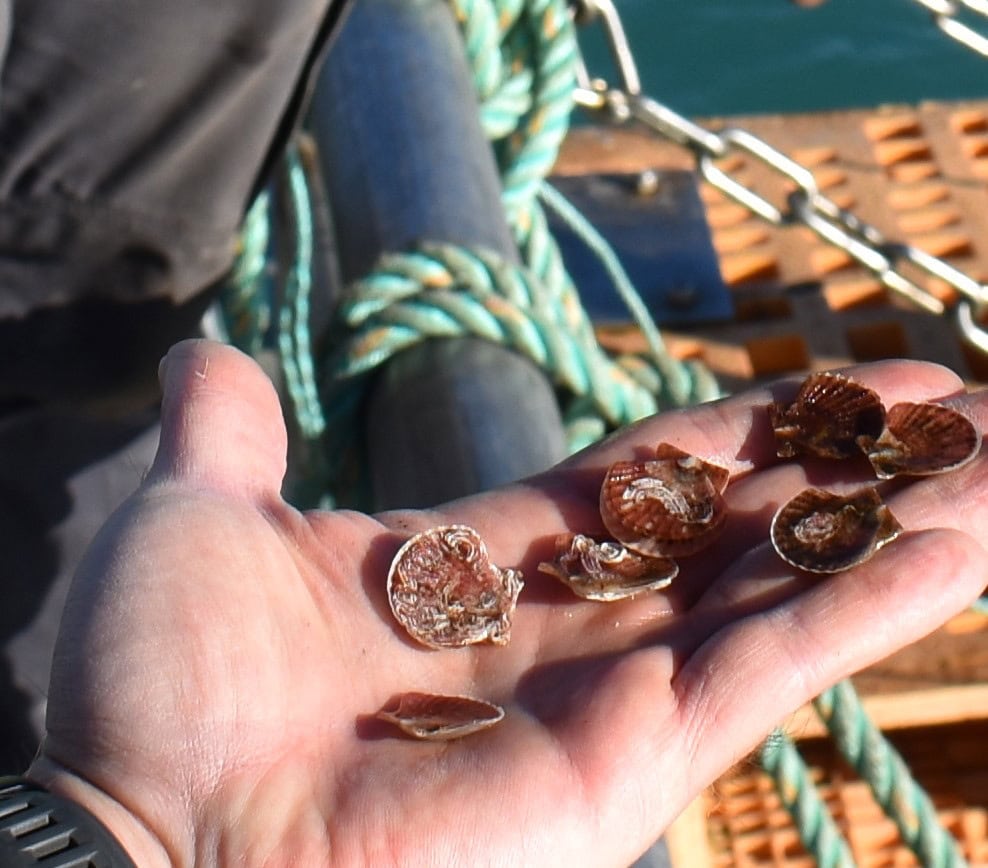
Figure 2: Juvenile scallops
The Cawthron team already has experimental farm structures growing oysters 10km off the coast of Ōpōtiki on Programme partner Whakatōhea Mussels’ farm, and they already have a long-term plan to develop multi-species farming.
Cawthon’s Open Ocean Aquaculture team leader Dr Kevin Heasman said the aim of the overall Government funded project was to de-risk new species aquaculture, particularly in exposed ocean sites, so that existing and new aquaculture businesses can develop in various locations around the country.
This Tasman Bay deployment saw about 1000, 20mm sized scallops laid in specially designed trays and installed by divers from Bruce Lines’ Diving Services Ltd. in Cawthron’s underwater ‘shellfish tower’ structure (the tower is also a product of the program). The young scallops were initially caught as spat on the Challenger Scallop Enhancement Company’s lines in Tasman Bay and raised by aquaculture scientists Dr Leo Zamora and colleagues from Cawthron’s Shellfish Aquaculture Research Platform.
Assuming the success of the experimental programme, the scallops are expected to grow to around 80 to 100mm over 12 months. Their growth will be monitored regularly using underwater drones, divers, and AI-enhanced photographic techniques.
On the same day, and in what is believed to be the first of its kind for this species in New Zealand, 160 metres of twine covered in the tiny spores of the kelp species Lessonia variegata were installed by divers on a submerged experimental rope and composite structure. Just how successful this nascent seaweed farming operation might be is unclear. The hope is that by deploying the seaweed at various orientations to the sunlight and at various depths the experiment will give clues about how to maximise both the kelp’s growth and biological composition. Waikato University PhD Candidate, Ashton Budd is assisting the research and will be using some of the results for his PhD. The longer-term aim is to identify and develop high value products from this and other kelp species.
Alongside the kelp lines, the divers also installed a series of underwater light monitoring devices, specially designed and built by Cawthron’s Blue Technology team, to analyse seaweed growth rates against sunlight levels. The parents of the seaweed spores were initially collected from Cape Jackson off the outer Marlborough Sounds and grown at Cawthon’s National Algae Research Centre. Winter is typically the ideal time for seaweed deployment, growth and harvesting. The expectation is that the kelp will grow to maximum size within twelve months. Further deployment of other seaweed species is planned for the coming months.
Cawthron scientists are also experimenting with farming oysters in Tasman Bay. As part of their trial, 6000 juvenile oysters, raised to just eight millimeters in size by Moana at the Cawthron Aquaculture Park, were deployed in customised farming cages. The oysters are expected to grow to about 70mm in size over the next 12-18 months. As they grow, they will be sorted for size and organised into groups in separate cages to test how best to grow the oysters for shape, depth, and size.
This trial is one of the many milestones Cawthron’s Ngā Punga o te Moana research programme has achieved through collaboration with partners and stakeholders in Aotearoa New Zealand and worldwide. We look forward to sharing the results in the coming months.
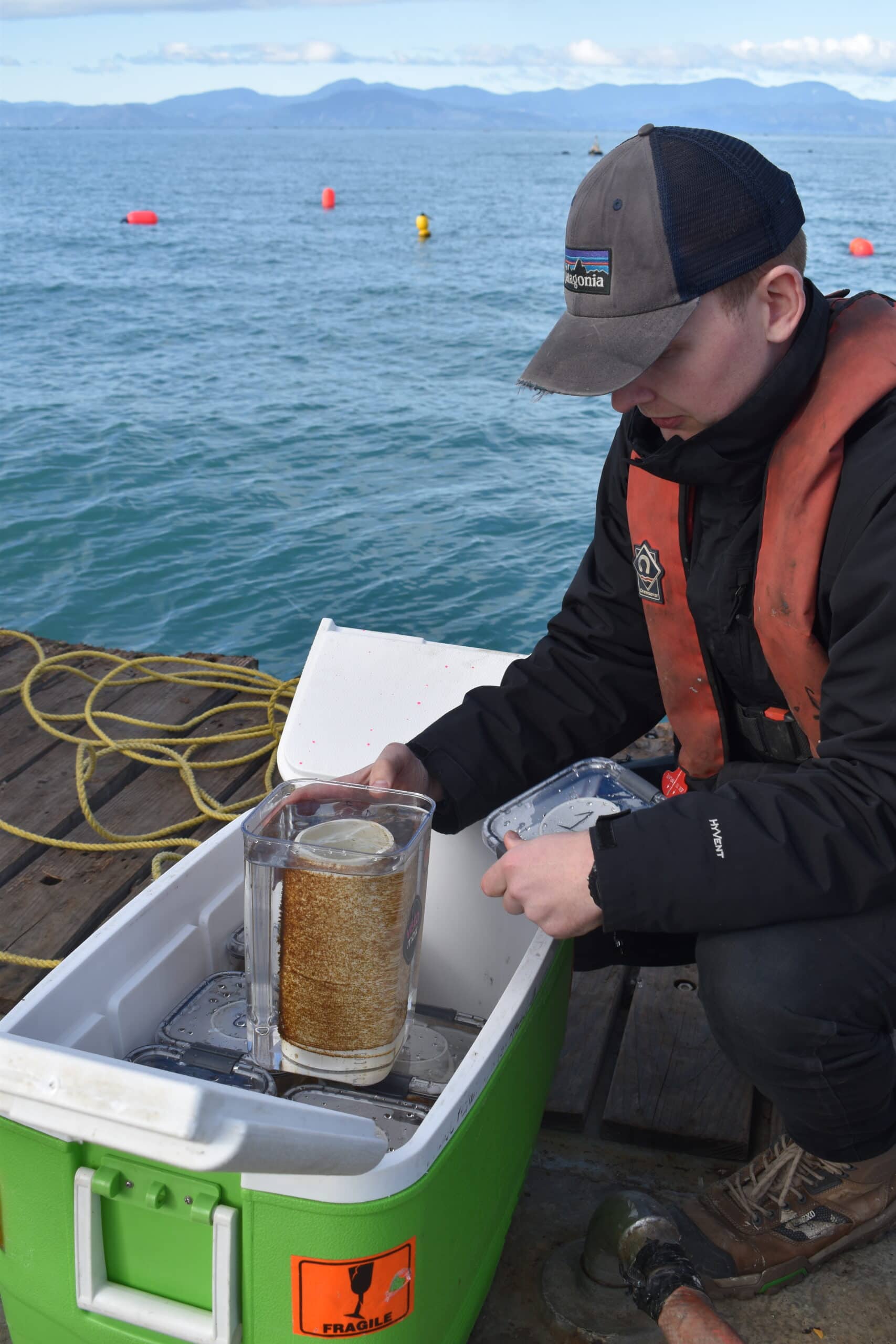
Figure 1: Waikato University PhD Candidate, Ashton Budd
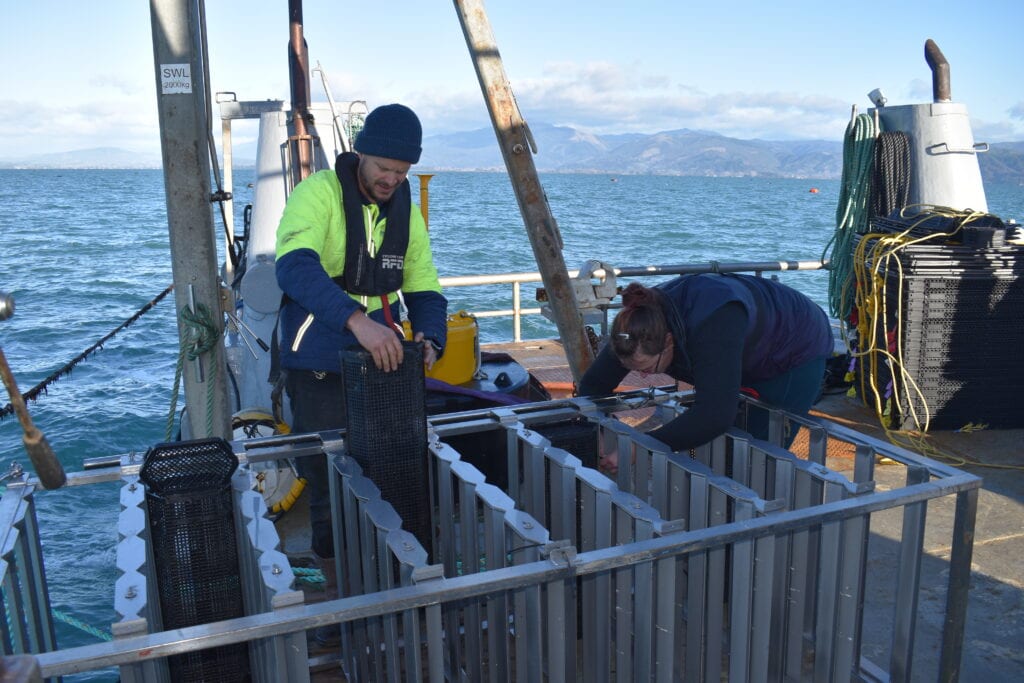
Figure 2: Checking on progress of oyster spat.

